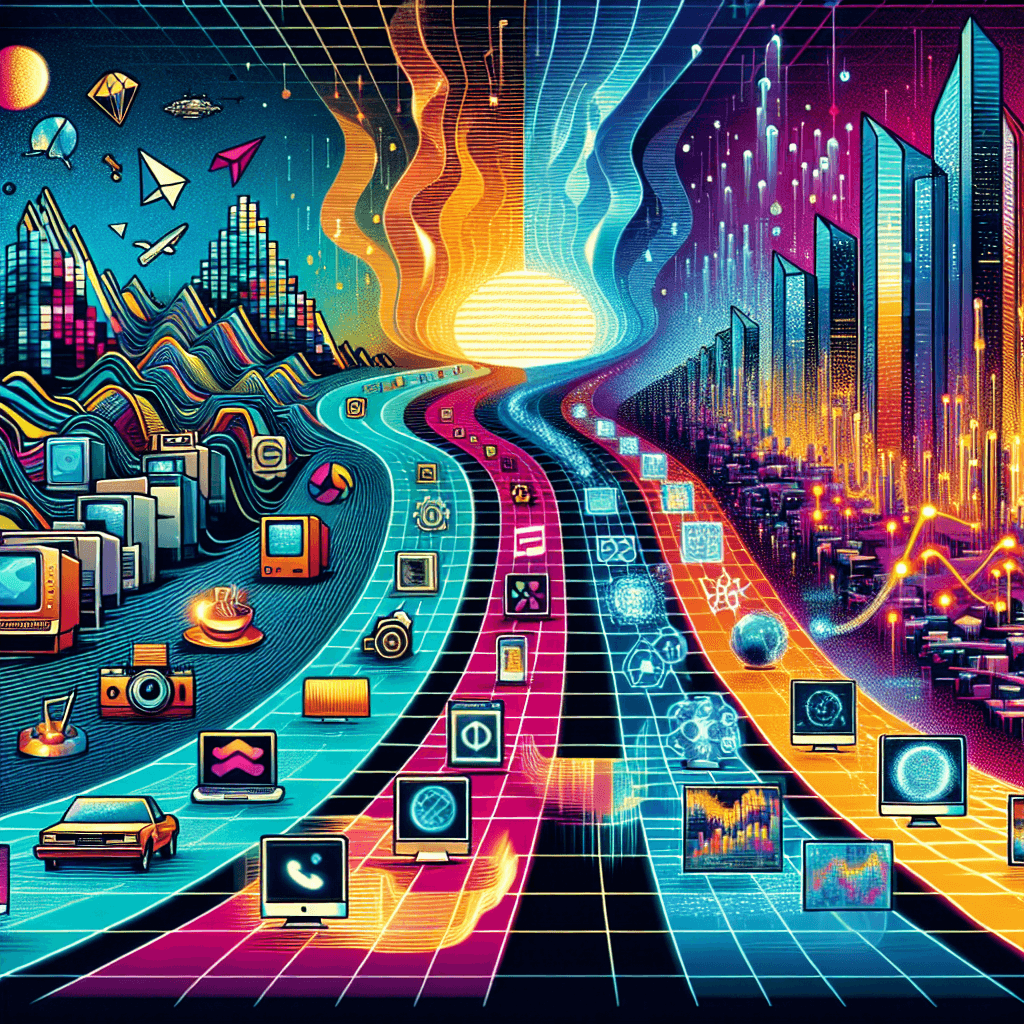Reinventing the Digital Landscape: Top Web Development Trends Reshaping the Future of the Internet
The internet has come a long way since its inception, and web development has played a significant role in shaping its evolution. From static HTML pages to dynamic, interactive, and immersive experiences, web development has transformed the way we consume information, interact with each other, and conduct business online. As we move forward, new trends and technologies are emerging, reshaping the digital landscape and redefining the future of the internet. In this article, we'll delve into the top web development trends that are revolutionizing the online world.
1. Progressive Web Apps (PWAs): The Future of Mobile Web
PWAs are gaining traction, offering a native app-like experience to users while leveraging the benefits of the web. By providing fast, seamless, and engaging experiences, PWAs are redefining the mobile web. With features like push notifications, offline access, and home screen installation, PWAs are becoming the preferred choice for businesses seeking to enhance user engagement and conversion rates.
2. Artificial Intelligence (AI) and Machine Learning (ML) Integration
AI and ML are transforming web development by enabling developers to create intelligent, adaptive, and personalized experiences. From chatbots and virtual assistants to predictive analytics and content generation, AI-driven web applications are revolutionizing the way we interact with the digital world. With the rise of AI-powered tools and frameworks, developers can now build smarter, more efficient, and more secure web applications.
3. Single-Page Applications (SPAs) and Micro-Frontends
SPAs have become increasingly popular, offering a seamless, desktop-like experience to users. By reducing page reloads and minimizing server requests, SPAs provide faster, more responsive, and more engaging experiences. Micro-frontends, on the other hand, allow developers to break down complex applications into smaller, independent components, making it easier to maintain, update, and scale web applications.
4. Voice-Activated Interfaces and Conversational UI
Voice-activated interfaces, powered by AI and ML, are changing the way we interact with the web. From voice assistants like Alexa and Google Assistant to conversational UI patterns, voice-activated interfaces are enabling hands-free, intuitive, and convenient interactions. As voice tech continues to advance, we can expect to see more widespread adoption in web development.
5. Blockchain and Decentralized Web
Blockchain technology is not just limited to cryptocurrency and financial transactions. Its decentralized, secure, and transparent nature makes it an attractive solution for web development. From decentralized data storage and authentication to secure, tamper-proof transactions, blockchain is poised to transform the digital landscape.
6. Web Assembly (WASM) and the Future of Web Performance
WASM is a binary instruction format that allows developers to run code in web browsers, promising significant performance improvements. By enabling developers to write high-performance, platform-agnostic code, WASM is set to revolutionize web development, enabling faster, more efficient, and more secure web applications.
7. Augmented Reality (AR) and Virtual Reality (VR) Integration
AR and VR technologies are no longer limited to gaming and entertainment. Their integration into web development is enabling new, immersive, and interactive experiences. From virtual product demos and interactive tutorials to AR-enhanced e-commerce experiences, AR and VR are opening up new possibilities for businesses and developers.
8. Cybersecurity and Web Application Security
As web applications become more complex and interconnected, cybersecurity threats are on the rise. Developers must prioritize security, implementing robust security measures, such as encryption, secure protocols, and threat detection, to protect users and maintain trust.
9. Accessibility and Inclusive Design
The web should be accessible to everyone, regardless of ability or disability. Developers must prioritize accessibility, incorporating inclusive design principles, such as clear navigation, high contrast colors, and screen reader support, to ensure equal access to information and opportunities.
10. Sustainability and Environmental Impact
As the internet continues to grow, so does its environmental impact. Developers must consider the ecological footprint of their web applications, opting for sustainable, eco-friendly solutions, such as energy-efficient hosting, minimalistic design, and carbon offsetting.
In conclusion, these top web development trends are reshaping the digital landscape, enabling developers to create faster, more secure, more personalized, and more immersive experiences. As the internet continues to evolve, it's essential for developers, businesses, and individuals to stay ahead of the curve, leveraging these trends to create a better, more inclusive, and more sustainable online world.
Ready to explore more courses and resources on the latest web development trends and technologies? Explore 01TEK's extensive digital library and AI-driven personalized learning paths to enhance your skills and stay ahead in the rapidly evolving digital landscape. With 01TEK, you can unlock your full potential, transform your career, and shape the future of the internet.
He who begins many things finishes but few
German Proverb



